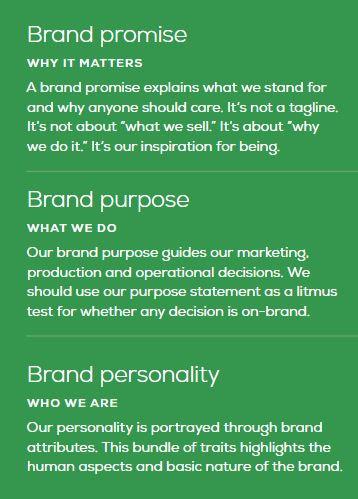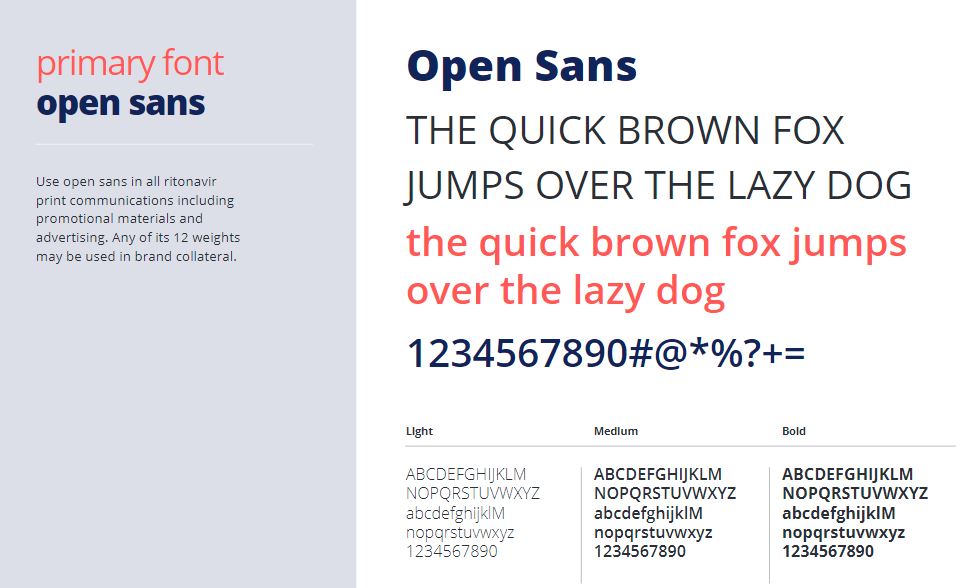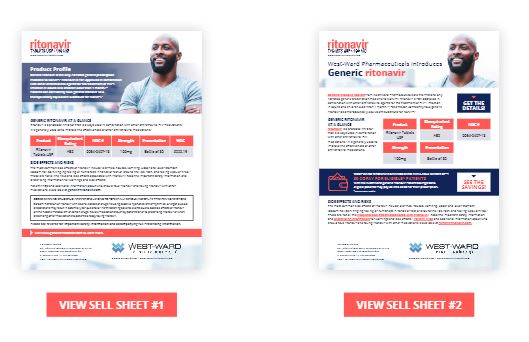Oh, the humanity! A shocking number of businesses are oblivious to the countless ways their brand identity is being assaulted by people on the payroll. These companies are looking the other way and averting their eyes from the accumulating injuries sustained by their revered brand identity, taglines and key messages.
You may be surprised to see all the places your brand might be misrepresented:
- Building Signage
- Community Outreach
- Company Emails
- Content Marketing
- Direct Mail
- Display Ads
- Employee Emails
- Landing Pages, Microsites & Website
- One-off Materials
- Packaging
- Promo Gifts
- Recruitment/HR
- Sales Collateral
- Social Media Pages
- Trade Show Signage
- Traditional Ads
- Transportation
Reasons vary, but more often than not, the organization’s execs are simply unaware of the misuse and resulting damage. Further, they may not be familiar with the simple solution that will protect the brand that the company and its employees have worked so hard to build—creating and enforcing a brand identity usage guide.
A memorable brand is all about consistency.
The purpose of such a guide is to establish a consistent application of the brand identity across all marketing efforts. A coherent look and feel of all branded communications is critical for building a solid, memorable brand and image. Any use of the brand’s logo, taglines, and other brand elements must adhere to the standards set forth in the guide.
A brand guide includes much more than logo rules.
So, what are the critical components of a brand identity usage guide?
Typically, we find that a brand guide must be customized to fit the needs of a particular organization. However, there are three common categories that should be represented:
Brand Overview
Where you’ll define your brand, promise, purpose, personality, voice and tone. These guidelines will help your organization keep its brand promise through clear and consistent messaging.
Brand Visuals
The section that most organizations are most familiar with. Logos and logo variations, icons, colors, typography, photography, and image treatments are all defined and exemplified.
Brand Resources
Assets and guidance for print and digital applications (e.g., tint specs or Pantone matches for spot printing). Includes access to logo, reference and sample files and contact information for questions.
Within each of these categories – Brand Overview, Brand Visuals and Brand Resources – you’ll pick and choose the elements that will best support the brand usage for your employees and partners. We’ve found that these 13 are the most common inclusions:
1. Mission or Positioning Statement
This brief statement will spell-out the organization’s purpose and guide its branding and marketing actions. A mission statement will offer a foundation for strategic planning, providing a clear path for decision-making. A positioning statement will define your target audience and how you’d like them to perceive your product/service brand. It will highlight your point of differentiation.
2. Brand Purpose
Here, you’ll define the core purpose of your business—why your business exists—which will serve as the basis of your brand. It is the promise you make to your constituents (typically your customers). This is a prime opportunity to answer your target audiences’ big question … “what’s in it for me?”

3. Touchpoints
Your organization reaches out to its target audiences in a variety of ways. Every touchpoint is an opportunity to strengthen the brand and convey its distinct spirit to customers and prospects. Each communication builds awareness of and recognition for your organization’s commitment to its audiences. These touchpoints will nurture a bond with your audiences, and create loyalty toward the brand.
Touchpoints may include home pages, landing pages, traditional or online advertising, direct mail, customer service, e-mail, industry events, new business development, employee relations, social media, PR and promotions. Acknowledging the key touchpoints for your organization and providing brand application rules and examples will remove uncertainty and boost compliance.
4. Brand Tone and Key Messages
Your brand tone is a collection of words or phrases that your organization uses to describe or encapsulate its brand personality and values. Key messages serve as the foundation for all written communications, these brief statements. They will reinforce the organization’s mission statement and brand/business purpose. At a minimum, you’ll address your primary audience segments individually, pinpointing the main issue, your brand’s solution and its proof point.
5. Tagline
Your tagline is a memorable phrase that summarizes your brand’s personality and substance. The guide will specifically describe how and when taglines are to be utilized in all types of communications. Examples of placement, font, size, color, etc. should be provided. If non-compliance is an issue, provide examples of what not to do as well.
6. Logo
The logo is the primary visual symbol of the brand, appearing on every marketing piece and providing instant recognition of the organization’s efforts to reach its target audiences. The brand guide will offer a logo design rationale and history. It will dictate exactly how, where and when the logo is to be utilized, placed and positioned.
Logo fonts, colors and sizes will be emphasized. The level of detail is directly tied to how serious the organization is about usage compliance. Specific examples of how to properly use the logo should be included. “Don’t Do This” examples may also be appropriate.
Various iterations of the logo should be visualized in the guide. Color, black and white, with and without tagline, horizontal and vertical lock-ups, among other variations will further guide your identity users.

7. Color Palette
Few things can compete with color for igniting the senses and motivating people to take action. Define the print and online color values for the primary colors that should be used to represent the brand across all marketing mediums, including promotional items. For each Pantone and Web-friendly color value, a sample swatch will be displayed for reference. Secondary colors approved for accent use may also be defined here.
For quick visual reference, each primary and secondary color will be displayed with a color swatch and coordinating RGB, CMYK and HEX codes.

8. Typography
The typestyle used to display offline and online copy makes an important contribution to the brand identity. The appearance of text should be inviting and easy to read. The Brand Guide will define the exact fonts, sizes and emphasis approved for use in print and online communications.
Visual examples as well as details such as formatting for headlines, body copy, headers and subheaders, links, etc. should be included, along with examples. Answer common questions or areas of frequent non-compliance. For example, how to handle disclaimer copy in print and digital applications may help address common compliance concerns. Your copywriting staff would appreciate rules for when to use ALL CAPS versus Title Case versus Sentence case, too.

9. ADA Specifications
For organizations that require ADA compliance, it will be important to specify expectations. For example, to meet WCAG Level AA standards for digital communications, a brand identity guide will provide a closer look at text and contract requirements.

10. Imagery
A brand is often expressed through a variety of photography that is meant to support key messages and convey a strong sense of meaning. Images should be purposeful, supporting the content, and appeal to target audiences.
A rationale should be provided for selecting imagery, along with a range of approved image samples. If a library of approved imagery exists, the guide will instruct readers as to how/where this library can be accessed. Rules for captioning or applying text on images will be defined as well.

11. Approval Process
Some organizations may require that branded marketing materials undergo a review and approval process prior to production/launch. The brand guide will provide a summary of the process and how the reader can initiate it.
12. Assets Library
This might be the most overlooked yet important component of a thorough brand identity usage program. A well-organized and easily accessible assets library (most often via an online portal) provides all internal and external parties involved in promoting the brand access to view and download the approved brand guide, color palette, logos, imagery, marketing materials—including letters, envelopes, self-mailers, brochures, promotional items, email templates—and more. Contact information for questions or concerns will be provided here as well.
The guide will instruct readers as to how/where this library can be accessed. An online portal will allow users to download samples for closer reference.

13. FAQs
Based on common misrepresentations and questions asked over time, you’ll be able to anticipate FAQs and answer them in your guide or in a supplement to the guide. In addition to Q & A, you can provide examples of What Not to Say/Do to ensure that common errors are mitigated. For some highly-regulated brands, it may be critical to include instructions and examples of what NOT to say or do in branded marketing communications.
Consistency elevates the perception of your brand among your most valued constituents.
Branding is as much—if not more—a strategic and methodical process as it is a creative service. In fact, if you embark on a branding, or rebranding, initiative without the proper investment in fact-based research and strategic planning, you’ll eventually learn that your focus on creativity and design has been largely wasted.
At the end of the day, an enforced brand identity delivers a cohesive representation to your most important audiences – from your employees and vendor partners to prospects and customers. When your brand’s identity is consistently represented across all channels and all touchpoints, it increases the brand’s perceived value.
By implementing brand guidelines, you make it easier to maintain the quality and integrity of your brand’s image.
If you’re looking for a fresh eye to help your brand live up to its true potential, contact the experts at Responsory. In the meantime, take a quick look at our approach to Branding services.






